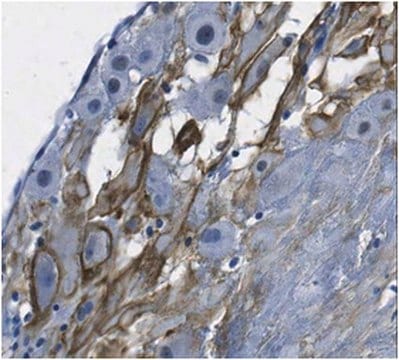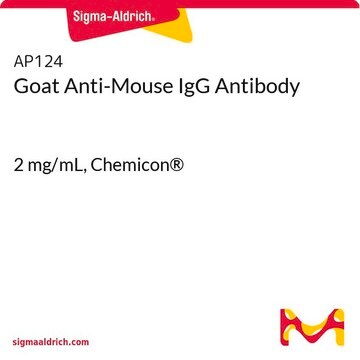MABS1266
Anti-LOX-1 Antibody, clone 15C4
clone 15C4, from mouse
Synonym(s):
Oxidized low-density lipoprotein receptor 1, Ox-LDL receptor 1, C-type lectin domain family 8 member A, Lectin-like oxidized LDL receptor 1, Lectin-like oxLDL receptor 1, hLOX-1, Lectin-type oxidized LDL receptor 1
About This Item
Recommended Products
biological source
mouse
Quality Level
antibody form
purified immunoglobulin
antibody product type
primary antibodies
clone
15C4, monoclonal
species reactivity
human
technique(s)
flow cytometry: suitable
immunofluorescence: suitable
immunohistochemistry: suitable
western blot: suitable
isotype
IgG2aκ
NCBI accession no.
UniProt accession no.
shipped in
ambient
target post-translational modification
unmodified
Gene Information
human ... OLR1(4973)
General description
Specificity
Immunogen
Application
Flow Cytometry Analysis: A representative lot detected LOX-1 in Flow Cytometry applications (Li, D., et. al. (2012). J Exp Med. 209(1):109-21).
Immunofluorescence Analysis: A representative lot detected LOX-1 in Immunofluorescence applications (Li, D., et. al. (2012). J Exp Med. 209(1):109-21).
Cell Differentiation Analysis: A representative lot detected LOX-1 in Cell Differentiation applications (Joo, H., et. al. (2014). Immunity. 41(4):592-604).
Immunohistochemistry Analysis: A representative lot detected LOX-1 in Immunohistochemistry applications (Duluc, D., et. al. (2013). Microb Pathog. 58:35-44).
Flow Cytometry Analysis: 1 ug from a representative lot detected LOX-1 in one million A549 cells.
Signaling
Quality
Western Blotting Analysis: 2 µg/mL of this antibody detected LOX-1 in 10 µg of human liver tissue lysates.
Target description
Physical form
Storage and Stability
Handling Recommendations: Upon receipt and prior to removing the cap, centrifuge the vial and gently mix the solution. Aliquot into microcentrifuge tubes and store at -20°C. Avoid repeated freeze/thaw cycles, which may damage IgG and affect product performance.
Other Notes
Disclaimer
Not finding the right product?
Try our Product Selector Tool.
Storage Class Code
12 - Non Combustible Liquids
WGK
WGK 2
Flash Point(F)
Not applicable
Flash Point(C)
Not applicable
Certificates of Analysis (COA)
Search for Certificates of Analysis (COA) by entering the products Lot/Batch Number. Lot and Batch Numbers can be found on a product’s label following the words ‘Lot’ or ‘Batch’.
Already Own This Product?
Find documentation for the products that you have recently purchased in the Document Library.
Our team of scientists has experience in all areas of research including Life Science, Material Science, Chemical Synthesis, Chromatography, Analytical and many others.
Contact Technical Service








